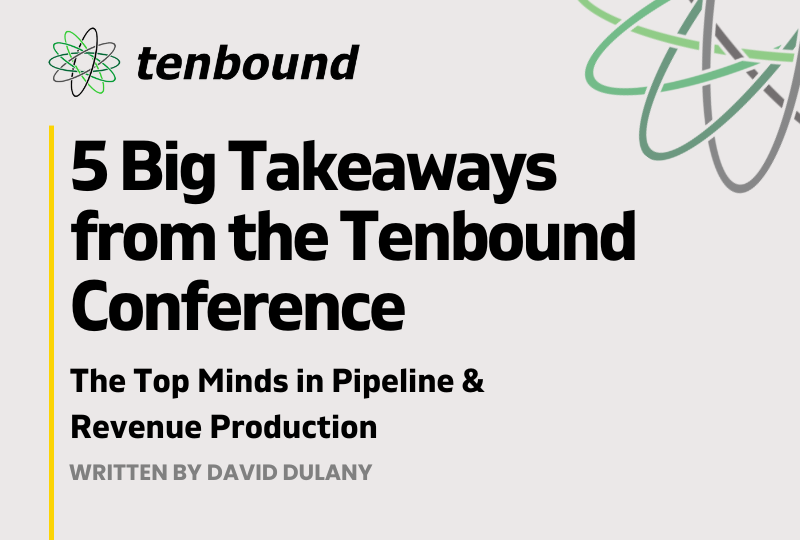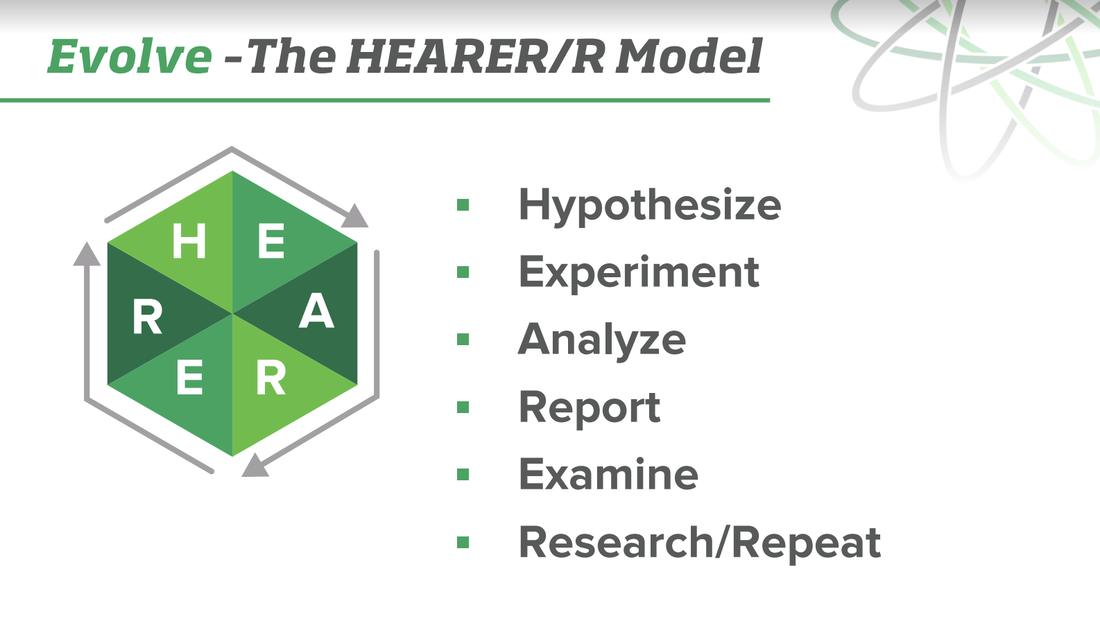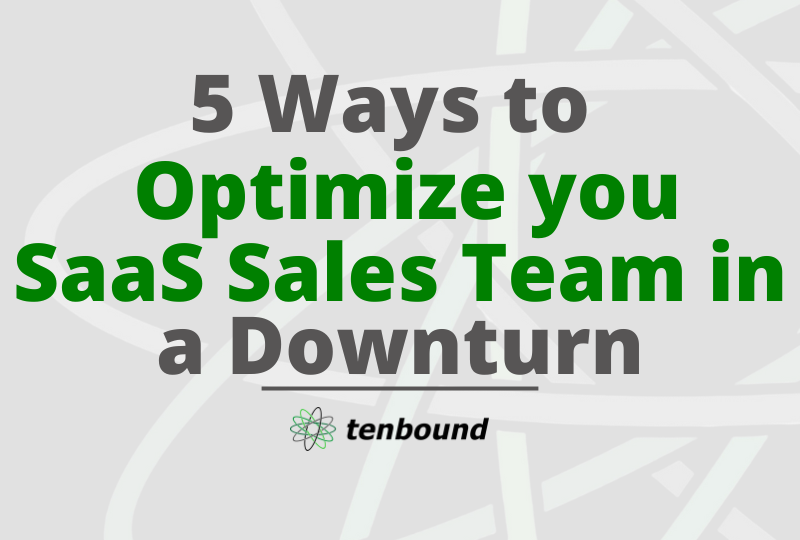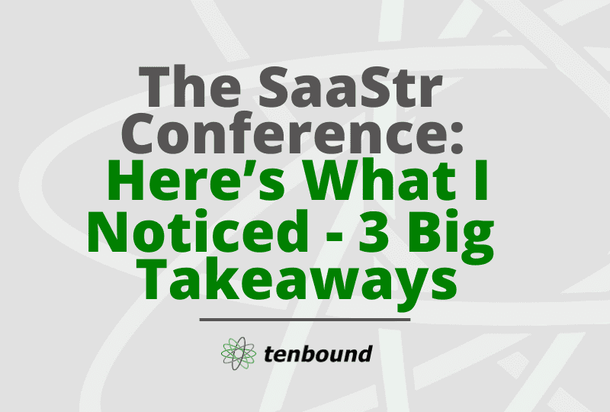Why Nobody Cares About Revenue Alignment
11/22/2023
Comments
We Talked About Revenue Alignment for 3 Years – Nobody Cared
The idea makes perfect sense: Alignment of Marketing, SDR, Sales, RevOps, and Customer Success into a revenue machine, creating predictable pipeline and sales for the company. In theory, it’s Revenue Nirvana. Everyone works together as a team, in one cohesive unit. With the advent of online CRMs, Marketing Automation, Sales Engagement Platforms etc, everything from the top of the funnel to the bottom can be measured and managed. The entire funnel can be put under a microscope. [The new term is GTM Alignment but it’s essentially the same thing.] For a while, it seemed the “CRO” was supposed to be across the whole cycle – from pipeline to revenue. Aligning it all to maximize potential, eliminate waste, and find GTM hypergrowth. Then, it became RevOps. Then, ABM, and now GTM. But still, there was very little alignment, mostly proclamations and then, simply going back to the status quo. In our Advisory practice at Tenbound, we work directly with Marketing, SDR, and Sales teams and Executives to help increase their pipeline and revenue. A few years ago boiled down that, despite all the big talk, the silos that still exist between parts of the revenue engine are the problem. That’s right, the old silos are still there and they prevent alignment from happening. In seeing it over and over with hundreds of clients, you don’t have to be a rocket scientist to figure it out. Why did the theory of Alignment never actually happen? Two words: goal setting. Yes, goal setting. Each of the departments has different goals. Although people theoretically believe in the idea of Revenue Alignment, in actual practice, the way that people are paid is different, and the way that people are reviewed on their performance reviews is different, the way people are managed is different, across all these teams. Marketing is goaled differently than SDRs, who are goaled differently from Sales, who are goaled differently than Customer Success. And of course, they have different goals than Executives. Plus, they are all paid differently. You can have all the meetings in the world to talk about Revenue Alignment, you can get everybody on the same page, once you go back to your desk, you just start working on the priorities that you’ve made already with your boss. And will get you to your financial and career goals. Revenue Alignment becomes just sort of an abstract concept. Even though there’s one funnel or one flywheel, and that’s a generally accepted terminology, in practice, it doesn’t exist at most companies. And, at Tenbound we’ve tried to introduce the concept and explain what the problem is. Everyone is very polite and listens, however, there is no leader to run the program, and nobody wants to step up and lead it. We all know, if there are 2-3 leaders (CMO, CRO, RevOps,? ), there ends up being no leader. The initiative dies. People will always move toward their own goals and objectives, versus an abstract concept that could potentially be more helpful to the company because they get a better return on their investment. Perhaps more importantly, it could be dangerous politically to stick your neck out to lead an alignment initiative, where you have to work across dotted lines and if it fails, you could be in trouble. It’s not worth it. [Ironically, the company doesn’t have different goals depending on who works at what job. It’s all one conversation in the board room: Pipeline, Revenue, Conversion rates.] The news is not all doom and gloom, some companies are actually doing this at a high level. And they are crushing it, driving better pipeline and revenue performance, and saving a ton of time and money in the process. For an example of companies doing Revenue Alignment successfully, check out Travis Henry and Hillary Carpio’s description of the Busting Silos book here The SDR job is arguably the hardest in all of business. In anything you can do in SaaS. It’s getting harder by the day with more and more noise out there. But with new tools and guidance from the very top pros in the field, there’s still a lot of hope.
In the first of our series here on the Tenbound site, we’re reliving some of the GOAT episodes we’ve produced. Top, top episodes cover a range of topics that all SDRs looking for growth need to invest time and thought into. Mindset. Routine. Goals. Cold Calling and emailing. Thinking about AE relationships. Closing when you can. Achieving scale. There’s a lot to get through in this piece. So to start us off… #1 Chris Beall In this episode of “The Sales Development Podcast,” Chris Beall, CEO of Connect and Sell, a Sales Development legend, shares invaluable insights with host David Dulany. They emphasize the key elements for success in modern sales: mindset, curiosity in cold calls, and effective questioning to deepen connections with prospects. Chris also highlights the significance of tonality and provides strategies for handling common objections. The episode underscores the importance of “cold” conversations and how Chris’s team assists sales professionals in generating more of them, making it a must-listen for Sales Development Pros seeking actionable wisdom. Want to watch on another platform? Here’s the link to the shownotes. #2 Armand Farrokh If you’ve met Armand Farrokh, you’ll know he is a force of nature. Having excelled in Sales Development and Management he’s now leveraging his expertise in coaching and hosting a Sales effectiveness podcast. His meteoric rise is attributed to his attitude, energy, and commitment to skill development. This episode digs into his mentality and routines. Every salesperson could learn from how he sets himself up for success. Want to watch on another platform? Here’s the link to the shownotes. #3 William M Ballance In Episode 5 of our spin-off series, Derrick Williams hosts William M. Ballance, CEO of Lavender. This one’s an exciting conversation about cutting-edge technology that empowers sales professionals. What’s coming, what’s here now and what are top pros doing differently with new tech? The episode dives into the origins of Lavender, the mechanics of its technology, and valuable insights on how sales professionals can optimize the software for improved email communication, making it a must-listen for those seeking to boost their sales effectiveness through advanced tools and strategies. Want to watch on another platform? Here’s the link to the shownotes. #4 Michael Pedone In Episode 197 of The Sales Development Podcast, Michael Pedone, founder of Salesbuzz.com, shares his inspiring journey from commission-only sales roles to entrepreneurship. The episode delves into the age-old question of whether great salespeople are born or made, with Michael providing his insights. The conversation then explores alternative avenues for learning sales best practices beyond popular platforms like LinkedIn. Michael offers practical advice for improving understanding of Ideal Client Profiles, especially for new sales professionals. As the episode concludes, Michael discusses Salesbuzz.com’s training methods and unique client engagement approaches, making it a valuable resource for those interested in sales development and strategy. Want to watch on another platform? Here’s the link to the shownotes. #5 Ran Oelgiesser In this episode, Ran Oelgiesser, a serial entrepreneur and CEO of RightBound, discusses his mission to revolutionize sales by transforming it into a self-driving car through autonomous prospecting solutions. Ran emphasizes that merely automating routine AE/SDR processes and gaining insights from AI is insufficient; the primary goal should be the complete transformation of outbound sales. He explains the crucial role of AI in the outreach process, not just offering recommendations but making decisions and taking action. The conversation explores the analogy of comparing sales to self-driving cars, its relevance to Sales Development, and what lies beyond traditional prospect research, shedding light on the innovative direction of sales technology and strategy. Want to watch on another platform? Here’s the link to the shownotes. #6 Josh Braun In this action-packed episode, Josh Braun, known for the widely popular “Bad Ass B2B Growth Guide,” shares his unique journey from apprenticing under Jason Fried, founder of Basecamp, to his background as a teacher. Josh’s commitment to delivering excellence in training, coaching, and even elite athletics sets him apart. The conversation, enriched by insights from authors like Chris Voss, promises to surprise and engage listeners, offering a valuable perspective on sales and growth in the B2B realm. Want to watch on another platform? Here’s the link to the shownotes. #7 Ollie Whitfield In Episode 201, Ollie Whitfield, Marketing Lead at VanillaSoft, offers practical and tactical insights on cold email strategies. He discusses the development of innovative email frameworks and the process of choosing the most suitable ones for their objectives. Ollie emphasizes the distinction between email frameworks and templates, a crucial point for those crafting cold emails. The conversation delves into the psychology behind these frameworks and highlights the critical role of relevance in achieving success with cold emails. Ollie concludes by inviting listeners to reach out for further insights into cold email best practices, making this episode a valuable resource for anyone looking to enhance their email outreach efforts. Want to watch on another platform? Here’s the link to the shownotes. #8 Kristin Hersant In this insightful episode, Kristin Hersant delves into practical strategies for field account executives to maximize the potential of touch patterns within sales engagement systems and collaborative workspaces, particularly in enhancing communication between SDRs and AEs. The conversation explores Groove’s (now part of Clari) product roadmap, user-friendly interfaces, and the importance of creating champions for Sales Engagement Platforms (SEPs). This episode offers a valuable perspective on what sets Groove apart in the marketplace, making it a must-listen for those interested in optimizing sales processes and collaboration in the field. Want to watch on another platform? Here’s the link to the shownotes. #9 David Kreiger Many companies have downsized their Sales Development programs despite thousands of open SDR job listings. Regardless of your role, maintaining a strong and consistent pipeline is crucial for success, necessitating either hiring SDRs or outsourcing. David Kreiger, with his experience at SalesRoads, shares insights on how to establish a highly effective program, whether in-house or in collaboration with an outsourced company, providing valuable guidance for current times. Want to watch on another platform? Here’s the link to the shownotes. #10 Jeremy Donovan In this dynamic episode, Jeremey Donovan discusses a wide range of topics, including the future of technology, the challenges of AI development in the “uncanny valley,” insights into Diversity and inclusion email outcomes, and the intricacies of book writing. Jeremey provides valuable insights and perspectives, making this episode a compelling listen for those interested in the evolving landscape of technology and its impact on sales and communication. Want to watch on another platform? Here’s the link to the shownotes. #11 Amir Reiter Amir Reiter, formerly overseeing a 200-person nearshore operation, maintains a hands-on approach by personally testing the phone systems. In this episode, he explores the latest techniques, mindset, and innovative approaches to market outreach, offering valuable insights into staying at the forefront of sales strategies and operations. Want to watch on another platform? Here’s the link to the shownotes. #12 Calvin Patterson Calvin Patterson’s career has been marked by a dedicated pursuit of Sales Development knowledge, including trial-and-error, certifications, courses, and affiliations with performance improvement organizations. He argues that viewing SDR roles as temporary can harm one’s career prospects, emphasizing the advantages of his lifelong commitment to Sales education and growth. Want to watch on another platform? Here’s the link to the shownotes. #13 Steve Hall Steve Hall, renowned for his expertise in reaching CEOs, shares invaluable tips in this episode, emphasizing the importance of demonstrating your understanding of the person you’re reaching out to. With his dry sense of humor, Steve’s insights soar, highlighting how mastering his laser-focused H2H (human-to-human) strategies is crucial before getting caught up in technology, making this episode a must-listen for sales representatives seeking CEO engagement success. Want to watch on another platform? Here’s the link to the shownotes. #14 Aurelien Mottier Aurelien Mottier is the CEO and Co-founder of Operatix (now part of MemoryBlue), a leading provider of Outsourced SDR programs. He has successfully grown the company from bootstrapping and developed a robust Sales Development process that consistently delivers results to clients. In this week’s episode, he shares insights on his journey and offers valuable lessons on building a thriving business and achieving consistent success in Sales Development, even in challenging times. Want to watch on another platform? Here’s the link to the shownotes. That should be plenty of content for you to get through over the next few weeks and months. Of course, there is a ton more on the Tenbound site here. The Sales Development podcast publishes regularly on all of your favorite audio platforms like Spotify, Apple Podcasts and everywhere else. We recently gathered the Top Minds in Sales Development in one place, over one day in Austin, Texas for the Tenbound Sales Development Conference.
The theme of the conference was EVOLVE – and based on the talks, the speakers are thinking hard about where Sales Development is going and how we can best react to the crazy times happening in our economy right now. One thing is for sure, companies continue to need Pipeline & Revenue, now more than ever. The skills of great Sales Leaders and SDRs will always be in high demand, especially now. Actually, now more than ever. Here are a few key takeaways:
Want more Pipeline and Revenue? Join Tenbound Plus today for access to all premium content. New Trends in SDR Learning Technology
11/28/2022
One of the most exciting new technologies emerging today to help SDRs improve is a company called Teamflow.
Using Teamflow, groups of SDRs and AEs (or basically anybody in inside sales) join others in a virtual meeting to create a virtual sales floor and start making calls. Others in and out of the company can jump in, listen in real-time and offer support, feedback, and advice. Similar to the old-school sales “bullpen” of yesteryear, where people used to work together in an office in a group. One of the things that sucks about remote work is the feeling of isolation. With this tech, SDRs can hear others making great calls, and also ‘meh’ calls, and terrible calls. It’s all part of the process of getting better. Adding a new layer of technology makes it even more useful because when you were in the sales bullpen you only heard one side of the conversation, and not the other. With Teamflow, you can listen to both sides of the conversation. This is how the new generation of salespeople learns and interacts online. The trends toward SDR and Inside Sales enablement point in this direction. The old-school methodologies of instructor-led training, posting product sheets to your wiki, and offering occasional weekly training, are all helpful, but they are not just-in-time coaching and are not peer-led. They don’t fit the workflow of a new generation. A generation raised on video games with instant gratification, and YouTube videos with constant jump cuts have never had the time patience or energy to learn by reviewing slides on their own and listening to boring lectures. They want micro-learning, just-in-time training, preferably among their peers in a structured way that includes gamification, collaboration and fun, with awards so that they know they’re constantly making progress. There are other tools which are chrome extensions that follow along and assist as SDRs are on calls are other micro-learning solutions that are more just in time for the workflow of the SDR. However last time I checked they don’t involve the peer-to-peer aspect of something like Teamflow. The potential of a tool like next is really interesting in that they can layer on learning methodologies, training programs, and other job specialties within the inside digital workforce to make it more valuable across the company, more than just salespeople. There’s also the Conversation Intelligence layer platforms that could be potentially integrated and used the data that’s being provided across companies on best practices versus just the one company that’s using them. This is definitely a space to watch and will be in included on the next Tenbound Market Map -potentially in the Sales Enablement quadrant. Teamflow is hosting a webinar this month - sign up here. Find out more about how they use this: Advancing Your Career as an SDR Manager December 6th, 2022 @ 10AM PST We are all familiar with the Scientific Method we’re all taught in our first science class. A thousand-year-old methodology.
But how does this relate to running a successful Sales pipeline generation program? Especially now, with all the changes happening in the economy, what can we learn from this ancient methodology? We introduce the HEARER/R Methodology. Use this to track your campaigns and align your revenue engine against the scientific method. Apply this method to your outbound efforts, running continuous HEARER/R programs over a set time period, usually, a 90-day period is enough time to start getting useful feedback. This will create an upward spiral of learning and productivity. Here’s the breakdown: The HEARER/R Methodology
Hypothesize: Based on past results, or if you’re just starting out, based on your best judgment, what outbound message will you use to impact your market? What channel will you use primarily to interact with your market- cold calling, emailing, social media, events, and others? What size company and which verticals will you target? Who are the personas you will target and what are they most concerned with? What data provider and list prioritization strategy will you use? Start a the beginning. Create an initial hypothesis that you will commit to testing for 90 days, or a long enough time period to get meaningful results. Experiment: Start testing. Use the messaging, lists, and channels you have determined you are going to run, and execute your sales plays. Start reaching out to prospects, making contact, and opening conversations. Set up activity metrics to ensure enough activity is happening every day, and hold your team accountable for hitting those numbers. If the initiative requires more or less activity, you can adjust during the repeat phase. If nothing is happening, that’s a data point. Your initial hypothesis could be off track. Analyze the results At the end of each week, and each month, review the campaign results. Were there any responses? Who replied? How did they reply? Which persona is most likely to respond to your current messaging? Is there an emerging channel that is working better than others, i.e. is cold calling working better than email? At a high level, are you starting to see trends? Compile the results into a format you can review. Report on the results At a set time period, at least monthly, report on the results of your campaigns, with a cross-functional Go-to-market team. Put more eyes on it to get feedback and ideas. Does the messaging resonate with you, is our talk track accurate based on real-world examples? Are we missing a key point or objection-handling technique we need to add to the campaign? Essentially, how can we get better results? Examine and question results Now, we’ve seen the initial results, and gotten feedback and input from a cross-functional team, it’s time to be brutally honest, are there people, processes, or technology constraints we need to address in order to improve performance? Are there bottlenecks that need to be removed? Are we tracking the right metrics and looking at the right problems? Vigorously question the results. Research further If you’re a student of the craft you know there are many resources, ideas, and studies on best practices in prospecting. Every day new ideas and methodologies are produced. Capture new ideas and organize them into your own playbook. Now, look at the results of your campaign and cross-reference the ideas and research you have done. Are there any new ideas or techniques you can use to improve your results? /Repeat Take all that you have learned from running the campaign, the results, the teardown, the further research, and create a new hypothesis. You are now back at the beginning of the HEARER/R process. Create a new hypothesis and start over at the beginning, running the process again. Forever. A continuous process to better results, processes, and return on investment. Next time you see a debate online about whether cold calling works, or emailing, or events, now you can reply with one word: HEARER/R! Have you tried this? Leave a comment below. During a market downturn, selling may be difficult, and setting up calls even harder. Not only are companies getting ready to operate with a lean staff, but there seems to be budget freezes from your buyers. People start ghosting.
Deals will start to take longer to close and meetings will be harder to book. Yet, there are ways to still generate revenue and keep your sales org going. As the Stoics say, focus on what you can control. Below, we've compiled some methods to help you get ready to conquer the time ahead. 1. Stay Focused It all comes down to this. The entire company should be on the same page. This is the time to be relentless with your team goal. If you have projects that are not serving your core competency, now is the time to cut them. Communication will be the life blood of the company during this time. Each department, from sales to marketing, to customer support, must focus on one singular goal. If the team wasn’t already on the page and working towards the same KPIs, then now is the time to do that. There is no time for wasted effort, chasing after goals or new initiatives that won’t directly serve the company. 2. Upsell & Cross-sell Now is also the time to be diligent with your current customer base. Most SaaS companies put far too much emphasis on acquiring new logos in a downturn — instead of focusing on their existing customer base. Instead, concentrate on optimizing your renewal rates and expanding your customer base to additional services. Start where you already are. Build deeper relationships with your existing customers. Work on getting into other line of businesses. Push to get 2-3 year deals. These are just some of the things that you can do to ensure that you grow your existing customer base. 3. Create the best customer experience We’ve seen the trend over the last 5 years of the focus being on creating a buying process that aligns with how your customer buys.This is perfect time to think through areas that need improvement in your over customer experience. Consider offering different payment options so you can tailor the experience to each customer's specific needs. You may also want to explore providing additional discount options. At the end of the day, customization should always be made with the user experience in mind. You’ll want to provide your users with the best possible experience when purchasing your product. This starts from the moment your Sales Development Representative reaches out to them to the time the deal is closed and handed off to the the CSM team. Focus on providing the best experience possible for that customer. 4. Level up your team Resilient sales teams are able to quickly adjust to changing markets as long as you invest in training and skills development. This way, your employees can handle any role or responsibility that arises. Even though you may not be pursuing as many opportunities in the next year, this is the right moment to invest more heavily in training and coaching your sales reps. Take advantage of every chance to review calls together as a team and get everyone focused on growing their business. Investing in your team ensures that you build loyalty. Sales reps will stick around longer if they know that they are being invested into. 5. Automation - Doing more with less More often than not, you’ll have less resources than you when it isn’t a downturn. You’ll want to assess your sales process to see which process could be automated to help your team out. Not only will it save time, but automation can lower risks for salespeople by reducing errors and helping them focus their attention on high-value interactions instead of mundane minutiae. At the end of the day, we never want to automate in a vacuum. The goal is make your team as efficient as possible. If there are two things you remember from these tips, let it be this:
If an economic crisis occurs, you may witness some fluctuations in revenue. Therefore, companies want to be ready for an upturn, they need to invest in their products and their customer service. And they must be able to demonstrate that their products and services offer genuine benefits to their customers. In 2022, we’ve seen companies redefine themselves in their sales motion. Some companies have had to become very creative to create the pipeline, and we’ve highlighted several of the tactics here on this blog.
In our experience, only some of these tactics will remain. Here at Tenbound, we have had the privilege to talk to Sales Development Leaders (SDR) who are on the leading edge in their industry. Based on those conversations, we’ve highlighted three main areas of the SDR functions that will grow and become more important in the future. Automated Tools for SDRs Over the past five years, we've seen the rise of artificial intelligence tools, but they haven't been widely adopted by sales organizations. However, over the past eighteen months, we've heard good things about automated dialing platforms like ConnectandSell and Orum. With these tools, SDRs can now handle twice as many calls per day than before. The hope is that they can use the extra time to perform additional tasks like personalizing emails. Another tool that has recently gained traction among revenue leaders is Lavender. Let's face it, most SDRs aren't copywriters. We can always use a little bit of help getting an initial concept off the ground or clearly and succinctly conveying our point. This is why most people use Lavender. We've found it works especially well when SDR Management doesn't have the time to read each and every email their sales reps send. Honestly, you shouldn't be reading them yourself either. SDR Support team If you ask any SDR manager, they’ll tell you that they have a plan to get each new SDR to ramp up and be at full productivity. The average time they’ll give you is 3 months. What they fail to tell you, is how little support they receive from other areas of the company and how that ultimately affects the BDR ramps time. We’ve seen SDR teams get looked over, because enablement and sales operations focus on Account executives first, and then dedicate whatever time they have left to the SDR function. But let's face it, they rarely have any time left. In the last 9 months, several companies have advocated for a dedicated SDR Ops and enablement headcount. The idea of having a dedicated support team for your SDRs is alluring, especially for those managers who juggle it all by themselves. We predict that this is a trend that will continue to grow, especially as teams further specialize and become more strategic. SDR Process Changes Two major process changes have also appeared. One of them is focused on Product led growth. CEOs have seen the growth of Slack and Twilio - among others - and want to replicate it. We should note that the SDR functions generally start a long time after these companies get going, so it’s mainly focused on going up market. This is a specialized skill set that we are starting to see CEOs ask for. The other process change that we are starting to see, (and that we are very very excited about. Did we mention how excited we are?!) is the emphasis on coaching. So much so that Cory Bray and Hillmon Sorey are attacking this issue. At the end of the day, nothing will grow your team more or increase retention than dedicated coaching. We expect to see teams focus on improving their current team - and to do so, they’ll need to ensure that their SDR teams are coached in the best way possible. Want to learn more about the future of Sales Development? Come join us at out The Tenbound Sales Development Conference LIVE in Austin, Texas. This will be a VIP In-Person Gathering of the Top Minds in Sales Development. 3 Big Takeaways from SaaStr
10/6/2022
I Visited 100+ Booths at the SaaStr Conference: Here are my 3 Big Takeaways
I had the opportunity to visit the SaaStr 2022 conference in person this year, my 3rd time going. After being stuck inside way too long, this year I decided to make a huge effort to catch up with everyone, check out all the latest software tools, and see all my old friends in our industry. It was awesome, an amazing experience. Highly recommended for anyone in our industry. But I had another challenge. I wanted to see what was new for SaaS companies since the pandemic, specifically Sales and Marketing software related to Sales Development pipeline generation. Tenbound gathers tools specific to Sales Development in our Market Map Directory, which is free to download and explore as you make your decisions. Also, as a Conference organizer myself, I wanted to see how the Tool Expo Marketplace looked and performed. So I made a plan, took some time to study the floor plan, and stopped by as many booths as possible. SDRs, Salespeople and Marketers, take note. Here is what I learned:
I saw several booths where the people working there turned their back to the audience, making it hard to engage with them to start. Put your phone or laptop away unless you are giving a demo. It’s also helpful to acknowledge attendees as they walk by your booth. If allowed, you should also stand in front of the booth and engage people walking by. I know that it’s been a while since so many people had the opportunity of presenting at a conference. I’m not sure if this should have been an excuse for how I felt visiting booths. It didn’t feel as engaging as I thought it should’ve been. Even if they don’t look like a hot prospect, make an effort to engage.
Remember, the people walking by don’t care about your company, your product, or what it does. They care about themselves and the problems that they’re trying to solve. Those are problems you can understand and potentially help them solve. Act accordingly. Spend time talking about the person in front of you and try to dig out any problems they may have, like they are human beings and not a “prospect”. Listening to irrelevant pitches over and over can result in people zoning out, especially with over 100 booths like at SaaStr. Talk about them, not all about you. If they start showing some relevance or interest, do a quick overview of your solution. But only if they want it.
After visiting too many booths, everything started sounding and looking the same to me. Another demo screen, another slide. Another gee-whiz moment. As a sponsor, you’ll want to think about the experience that the attendees are having at the conference. How tired will they be, and what sessions will they have just come out of? If you think about the attendees, you can work to create an experience that will ensure that they remember your booth and your company long after the event. The one thing I remember is somebody handing me a stuffed giraffe … not sure what they were selling but I do remember it. What have been some strategies you have used to maximize your time at events? Bonus tip: Sign up for more Braindates. Braindates are an amazing program where you can set up “dates” with people before and during the conference and then meet with them. I filled my calendar with dates with amazing people doing awesome things we can help each other with. What were your favorite parts of the show? Let us know your learnings by leaving a comment below. |
Blog Archives
November 2023
September 2023
December 2022
November 2022
October 2022
September 2022
August 2022
July 2022
June 2022
May 2022
February 2022
January 2022
December 2021
November 2021
October 2021
September 2021
July 2021
June 2021
May 2021
February 2021
January 2021
October 2020
September 2020
June 2020
May 2020
April 2020
March 2020
January 2020
December 2019
November 2019
September 2019
August 2019
June 2019
May 2019
March 2019
February 2019
November 2018
October 2018
July 2018
April 2018
March 2018
February 2018
November 2017
October 2017
September 2017
June 2017
May 2017
April 2017
March 2017
February 2017
January 2017
September 2016
August 2016
May 2016
September 2015
March 2015
February 2015
January 2015
Categories
All
Book
Boost Sales
Career
Coaching
Cold Calling
Communities
Conference
COVID-19
Infographic
Job
Leaders
Leads
Management
Market
Outsourcing
Pandemic
Podcast
Psychographics
Sales Development
SDR
Seminar
Social Media
Team
Technology
Trade Shows
Training
Trends
|









